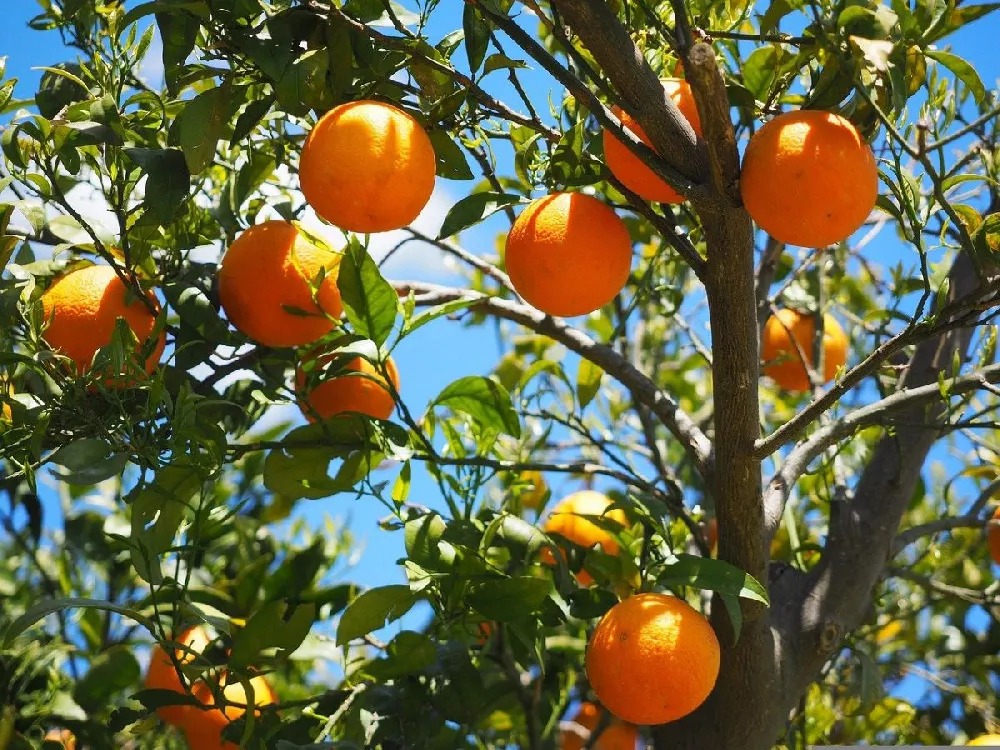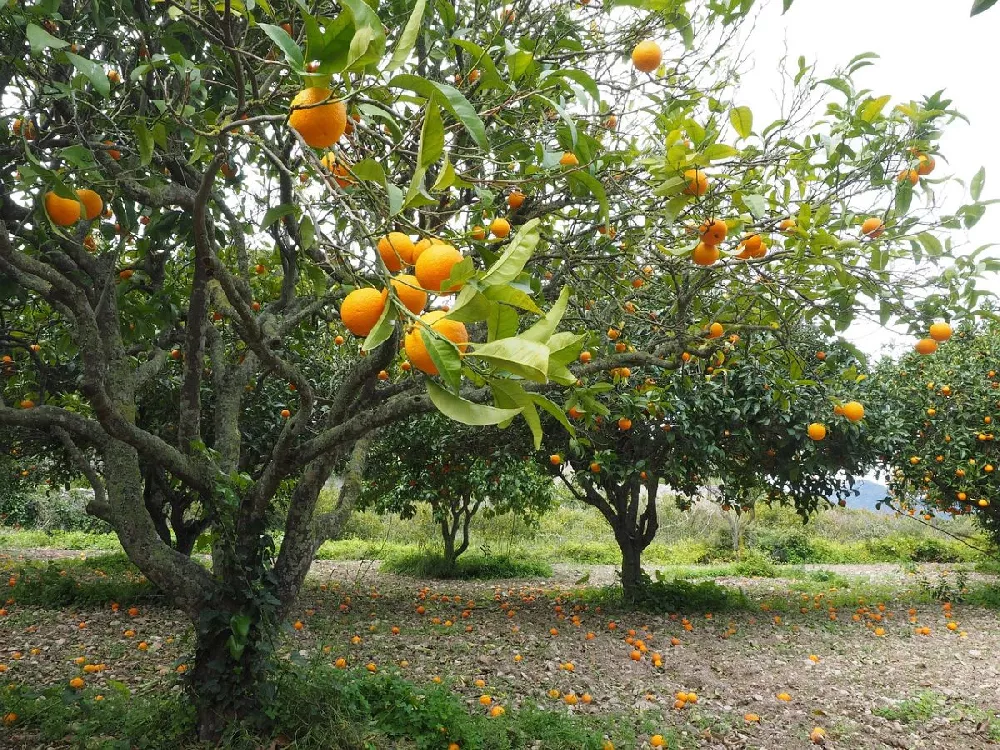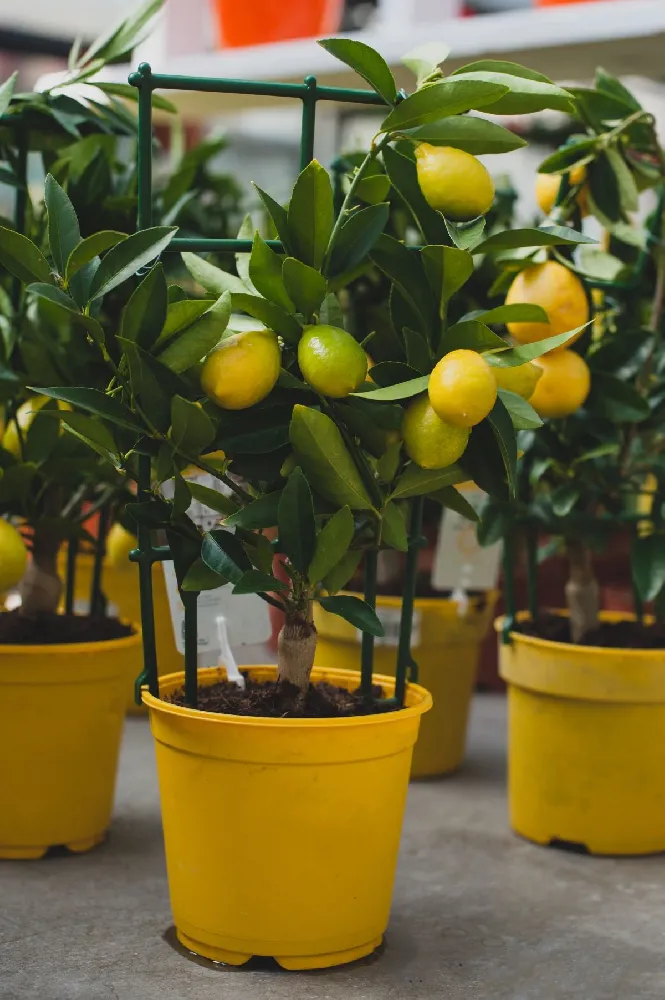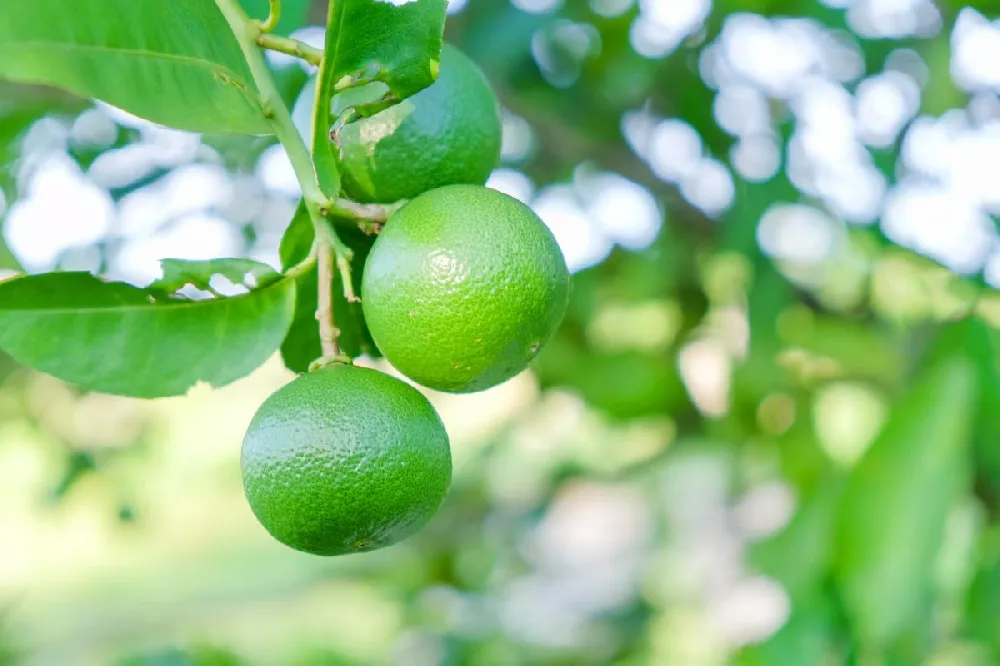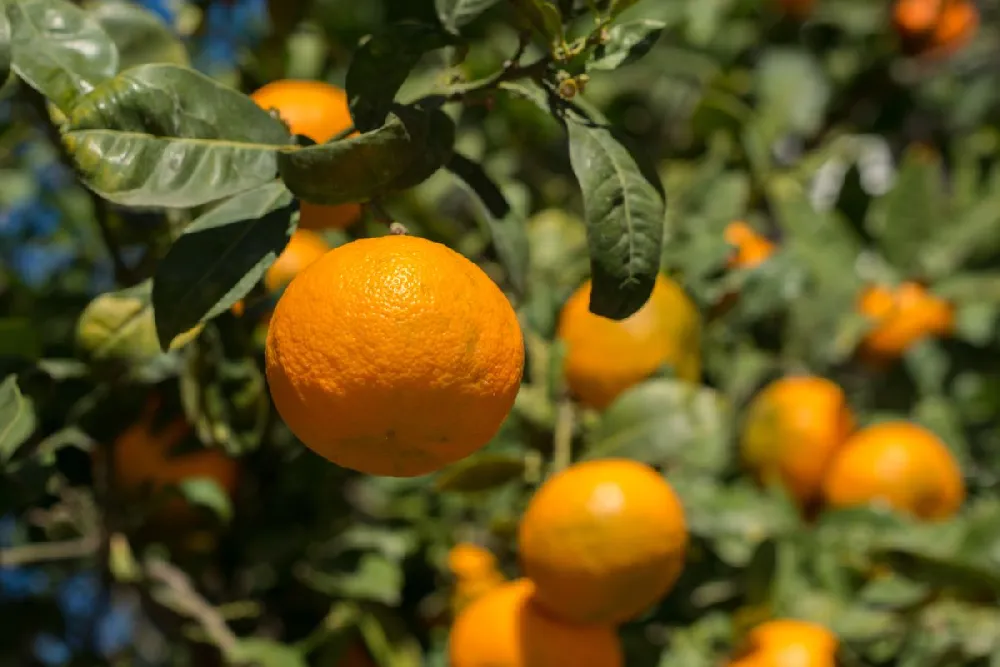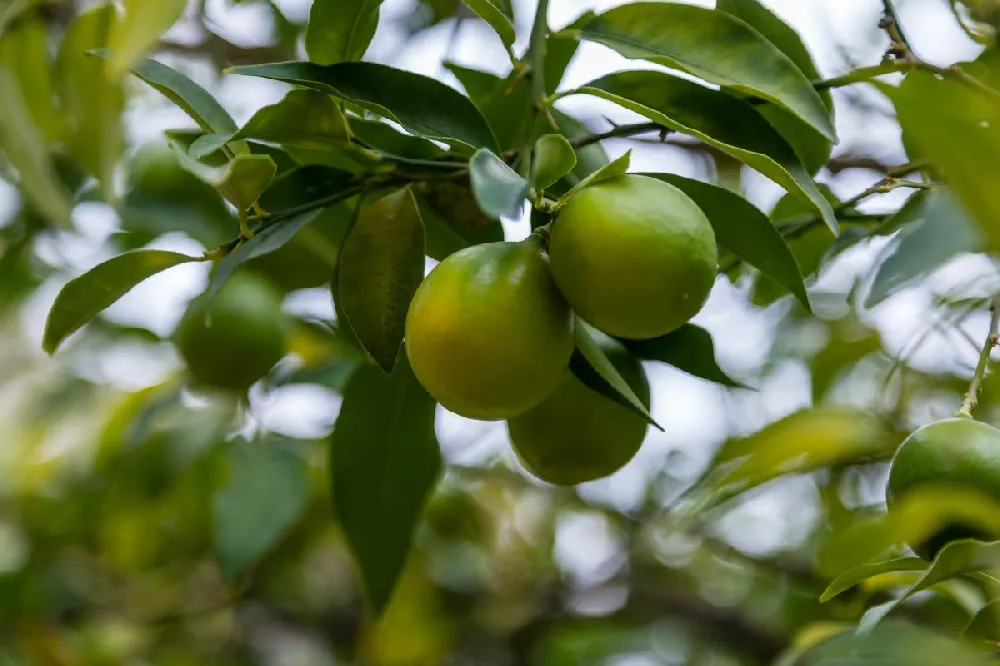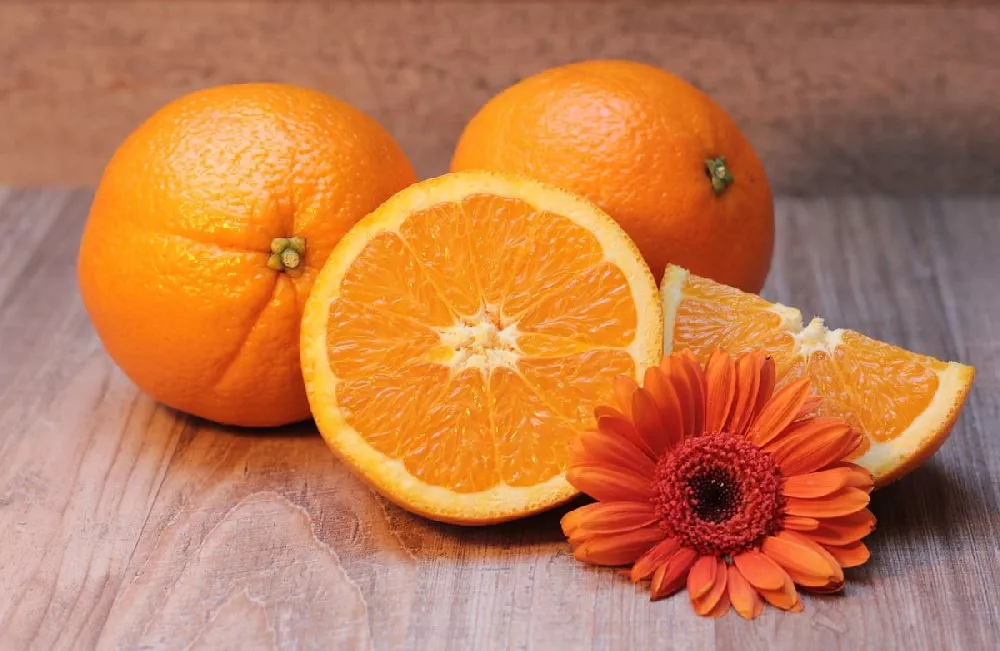- Home >
- Orange Trees >
- Cara Cara Orange Tree
Cara Cara Orange Tree for Sale - Buying & Growing Guide
- Ships in 1-2 days
- 1-Year Warranty Eligible
- Pots or accessories are not included unless specified in the product options.
Shipping Details:
Products shipped through FastGrowingTrees.com. Once your order is shipped, you’ll receive an email with a tracking number and estimated delivery date. Most orders will ship immediately.
Among the many varieties of citrus that are available to gardeners, the Cara Cara orange tree, or Citrus sinensis 'Cara Cara', stands out. This attractive tree, which adds grace and elegance to either the garden or an indoor setting, produces sweet, flavorful, low-acid fruit once it's established. The flesh is a dark pink and very juicy, and there are few seeds to contend with. The fruit is excellent for fresh eating. It may also be used in cooking — it's especially good in salads and dessert recipes. The tree itself is attractive, with a spreading, umbrella-shaped canopy and glossy evergreen leaves. The small white flowers are quite fragrant, and perfume the air when in bloom. Here are a few more reasons to plant this attractive and productive tree:
- Disease- and pest-resistant
- Can handle neutral or acidic soil, and tolerates sandy soil very well
- Adapts beautifully to being grown in a container
Plant Care
Sunlight

Your Cara Cara orange tree will do best if it receives at least 6 hours of direct sunlight a day.
Watering
Water whenever the soil dries out 2 inches below the surface — about once a week.
Fertilizing

Feed your tree during the growing season with a product designed for citrus trees and shrubs.
Planting and Care
Planting instructions
For best growth, site your tree in soil that drains well, in a spot that receives at least 6 hours of sunlight a day. Unpot your sapling, and tease out any encircling roots, which can girdle the tree and slowly kill it. Dig a hole that’s as deep as the root ball and twice as wide, and place your tree in it. Holding it upright and steady, fill in around the roots with topsoil, tamping down as you go to eliminate air pockets. Water thoroughly. Apply a 2- to 3-inch layer of organic mulch such as bark chips around the root zone to conserve moisture and hinder weed growth, but keep it from touching the trunk, which can encourage rot.
Watering and nutrients
For its first year, water your Cara Cara orange every week, giving it about an inch of water each time. If it’s very hot or dry, increase watering to twice a week. Once established, water your tree whenever the soil 2 inches below the surface is dry. Fertilize your tree during the growing season with a balanced, slow-release fertilizer that is designed for citrus trees and shrubs. Taper back on feedings during the winter months.
Pollination
Cara Cara orange trees are self-fertile, which means you can expect a harvest even if you only have one tree. Planting more than one, however, will increase the output from each tree. If you’re growing your orange tree indoors, you can help to pollinate it. Use a small paintbrush or cotton swab, and swirl it around the center of each flower. Go from flower to flower without cleaning off the brush so that pollen from one flower is transferred to another.
Pruning
Cara Cara orange needs little pruning. Monitor your tree for dead, diseased or damaged branches, and remove these whenever you see them. You may prune to open up the center of the tree to allow for better air circulation after you harvest the fruit. Other than that, it should not need extensive shaping or pruning.
Pests and diseases
Cara Cara is generally free of disease or insect pests. A well-cared-for tree can often fend off infestations or illness on its own, so keep your tree healthy and you will likely never have problems. If growing your tree indoors, you may see common insects such as red spider mites or aphids. Wiping the leaves off occasionally with a damp cloth can help get rid of them. Diseases that are common to citrus trees include citrus canker, anthracnose and botrytis rot. Never let your tree stand in a puddle and keep the area around the tree clean and free of leaf litter and debris to avoid problems with fungal issues.
Harvesting
Fruit color is not a reliable indicator of ripeness for oranges. The best way to determine when they should be picked is to taste one and see if it’s sweet. They can be picked by twisting them off the branch or using a pair of clippers to cut them off. Store them in a cool location, and use them as soon as possible.
Achieving maximum results
Although Southern gardeners can grow their Cara Cara oranges in a backyard or other outdoor spot, the tree is only hardy down to 20 degrees Fahrenheit. But Northern gardeners, too, can enjoy this delightful tree by growing it in a container that they bring in during the cold winter months. The tree adapts beautifully to growing in a pot and needs little additional care. Choose a container that is roughly twice the size of the root ball, with good drainage holes in the bottom. Use a good quality potting mix and water thoroughly after planting until water runs out the drainage holes. Container-grown plants tend to need more watering and fertilizer than those grown in the ground, so monitor your tree carefully, especially during hot summer months. In the winter, when you bring your plant indoors, place it in a sunny window on top of a tray filled with water and gravel or small rocks to increase the humidity.
FAQs
How big does Cara Cara orange get?
When well cared for and located in a bright spot, a mature Cara Cara orange tree can reach 8 feet, with a width of 8-12 feet. Container-grown trees are likely to stay somewhat smaller. You can control the height somewhat with careful pruning if you wish to keep your tree on the small side.
Where can I grow Cara Cara orange tree?
Cara Cara grows well outdoors in USDA hardiness zones 8-11, which includes much of the Southern U.S. and coastal California, up as far north as the Pacific Northwest. If your temperatures go below 20 degrees, the tree is easily grown in a container. Bring it inside in winter and place it in front of a sunny southern window, and it should be fine.
Are Cara Cara orange trees toxic?
The fruit is not toxic at all and can be enjoyed from the tree or used in cooking. The leaves, however, do contain a toxic substance. If you have companion animals that like to nibble on leaves, it's a good idea to keep this tree out of their reach.
Compare Similar Products
You can't add more Product Name - Product size to the cart.
OK
